
EIGHTEENTH-CENTURY LIFE
metrics 2024
Bridging Disciplines to Understand a Transformative Era
Introduction
EIGHTEENTH-CENTURY LIFE is a prominent academic journal published by DUKE UNIVERSITY PRESS, focusing on the interdisciplinary study of the 18th century through the lenses of Cultural Studies, History, Literature, and the Visual Arts and Performing Arts. With an established history since 1977, this journal serves as a vital platform for scholars and students to publish innovative research and critical discourse, shedding light on the complex social, political, and artistic currents of the 18th century. Despite its current ranking in the lower quartiles according to Scopus, the journal continues to foster scholarly dialogue and contribute to the understanding of this pivotal era in Western history. Its accessible yet scholarly articles make it a valuable resource for researchers, educators, and students alike, facilitating engagement with 18th-century studies from various disciplinary perspectives.
Metrics 2024
 0.11
0.11 0.10
0.10 0.20
0.20 15
15Metrics History
Rank 2024
Scopus
JCI (Web Of Science)
Quartile History
Similar Journals

RENAISSANCE QUARTERLY
Connecting Scholars through Renaissance DiscourseRENAISSANCE QUARTERLY, published by Cambridge University Press, is a premier academic journal dedicated to the exploration and scholarship of Renaissance studies, encompassing history, literature, and the visual and performing arts. With an impressive impact factor reflecting its scholarly significance, it holds a distinguished position in the prestigious Q2 quartile across various categories, including History, Literature and Literary Theory, and Visual Arts and Performing Arts as of 2023. The journal caters to a broad audience of researchers, professionals, and students eager to engage deeply with Renaissance scholarship through a curated collection of articles, reviews, and critical essays. Although it does not provide open access options, RENAISSANCE QUARTERLY plays an essential role in advancing the academic discourse of the Renaissance period, fostering connections within the global scholarly community. Since its inception in 1971, it has continuously contributed valuable insights and perspectives on the multifaceted dimensions of Renaissance culture, making it a vital resource for anyone invested in this rich field of study.
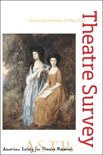
THEATRE SURVEY
Advancing Critical Discourse in Visual and Performing ArtsTHEATRE SURVEY, an esteemed journal published by Cambridge University Press, serves as a vital platform for innovative research in the realms of visual arts and performing arts. With an ISSN of 0040-5574 and an E-ISSN of 1475-4533, this journal has established itself as a prominent source for critical discourse and analysis since its inception in 1960. Currently categorized in the Q3 quartile for Visual Arts and Performing Arts, it ranks #239 out of 667 in Scopus, highlighting its relevance and impact in the field, positioned in the 64th percentile. Although it does not offer open access, the journal's rigorous peer-review process ensures the dissemination of high-quality scholarship crucial for researchers, professionals, and students alike. Based in Cambridge, England, THEATRE SURVEY aims to enrich the academic landscape with its comprehensive coverage of theatrical studies, theory, and practice, fostering a deeper understanding of the dynamic interplay between performance and society.
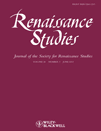
Renaissance Studies
Cultivating a Rich Dialogue on Renaissance HeritageRenaissance Studies, published by Wiley, stands as a vital academic platform within the disciplines of Cultural Studies, History, Literature and Literary Theory, Religious Studies, and Visual Arts and Performing Arts. With an impressive history of publication spanning from 1987 to 2024, this journal is recognized in 2023 metrics as a Q2 journal in four categories and Q1 in Literature and Literary Theory, reflecting its substantial impact in promoting interdisciplinary dialogue and research. The journal's robust Scopus rankings further underscore its relevance, including a position in the 83rd percentile in Literature and Literary Theory. Although not an open-access journal, it provides readers and contributors with access to curated, high-quality scholarship that explores the complexities of the Renaissance and its enduring influence on contemporary thought and culture. Researchers, professionals, and students alike will find Renaissance Studies invaluable in fostering discussions that bridge historical context with modern inquiry.
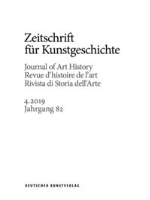
ZEITSCHRIFT FUR KUNSTGESCHICHTE
Bridging Tradition and Innovation in Art StudiesZEITSCHRIFT FUR KUNSTGESCHICHTE is a prestigious journal dedicated to the study of art history, offering insightful analyses and discussions that enrich the understanding of visual arts and performing arts. Published by DEUTSCHER KUNSTVERLAG GMBH in Germany, this journal has established itself as a significant platform for researchers and professionals alike since its inception. With a print ISSN of 0044-2992 and an e-ISSN of 2569-1619, it spans a comprehensive range of topics in art history, reflecting both traditional and contemporary perspectives. Although categorized in the Q4 quartile for Visual Arts and Performing Arts, the journal contributes to a rich dialogue within its field, aiming to foster academic discourse and promote scholarly research. Its scope has evolved notably from converged years starting in 1975 and gathering strength from 2001 to 2024, and it is committed to serving as an essential resource for students, academics, and practitioners in the arts. While not offering open access, the journal maintains a rigorous peer-review process to ensure high-quality submissions that advance knowledge and stimulate critical thought.
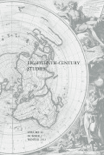
EIGHTEENTH-CENTURY STUDIES
Celebrating the richness of 18th-century cultural movements.Eighteenth-Century Studies, published by Johns Hopkins University Press, serves as a critical platform for scholars exploring the rich tapestry of the 18th century. With an ISSN of 0013-2586 and an E-ISSN of 1086-315X, this journal provides in-depth analyses and interdisciplinary perspectives that are essential for understanding the cultural, political, and literary movements of the time. As a Q3 ranked journal in both Arts and Humanities and Cultural Studies as of 2023, it occupies a vital niche in academic discourse, contributing to the field's vibrant scholarship despite its current ranking within the mid-tier of the Scopus rankings. This journal encourages submissions that present innovative research and engage with various methodologies, thereby fostering a deeper appreciation for the complexities of the 18th century. While it currently does not offer open access options, its esteemed reputation and commitment to quality scholarship make it an invaluable resource for researchers, professionals, and students alike. For those interested in the nuanced intersections of history, literature, and culture, Eighteenth-Century Studies stands out as a significant and indispensable resource.

Quiroga-Revista de Patrimonio Iberoamericano
Connecting Cultures: Preserving the Past, Inspiring the FutureQuiroga-Revista de Patrimonio Iberoamericano, published by UNIV GRANADA, is a distinguished open-access journal dedicated to the fields of conservation, museology, and the visual and performing arts. Since its inception in 2012, the journal has provided a platform for scholars and practitioners to disseminate innovative research and critical discussions pertinent to Ibero-American heritage. With a growing impact, evidenced by its category quartiles ranking—Q3 in Conservation and Q2 in both Museology and Visual Arts and Performing Arts—as well as its Scopus rankings, Quiroga serves as an essential resource for researchers, professionals, and students who engage with the complexities of cultural preservation and artistic expression. The journal’s commitment to open access ensures the widespread availability of knowledge, fostering academic dialogue and collaboration within the global community. For inquiries, the journal can be reached at their offices located in Granada, Spain.

LIBERTE
Connecting Ideas, Cultures, and DisciplinesLIBERTE is a distinguished academic journal that serves as a platform for critical thinking and scholarly discourse across various fields including Literature and Literary Theory, Philosophy, Sociology and Political Science, and Visual Arts and Performing Arts. Established in Canada and published by LIBERTE, this journal aims to foster intellectual exchange and explore the nuances of cultural and social narratives. Although it currently falls in the Q4 quartile across its categories, it is dedicated to advancing the conversation in the arts and humanities, providing a rich resource for researchers, educators, and students alike. With an ISSN of 0024-2020 and an active publication cycle running from 2002 to 2024, LIBERTE welcomes contributions that challenge prevailing ideologies and reflect innovative perspectives. While the journal is not open access, its value in promoting academic inquiry within its communities cannot be overstated.

REVIEW-LITERATURE AND ARTS OF THE AMERICAS
Elevating Voices in Literature and Art.REVIEW-LITERATURE AND ARTS OF THE AMERICAS, published by Routledge Journals, Taylor & Francis Ltd, serves as a vital platform for the exploration of literary and artistic expressions across the Americas. With an ISSN of 0890-5762 and an E-ISSN of 1743-0666, this journal has been dedicated to fostering scholarly discussion since its inception in 1968, addressing interdisciplinary themes that span literature, visual arts, and performing arts. Despite its current Q4 rankings in both Literature and Literary Theory as well as Visual Arts and Performing Arts, the journal remains committed to elevating critical discourse and offering a nurturing environment for emerging voices in the field. Access to the journal is through subscription, highlighting its focused audience of researchers, professionals, and students who seek to deepen their understanding of the cultural dynamics of the Americas. By engaging with diverse scholarly perspectives, REVIEW-LITERATURE AND ARTS OF THE AMERICAS aims to contribute to the ongoing dialogue about the significance of art and literature in societal contexts, making it an important resource for anyone interested in this rich and vibrant area of study.

Religion and the Arts
Connecting Spiritual Narratives with Creative EndeavorsReligion and the Arts is a distinguished scholarly journal published by BRILL, based in the Netherlands, with a dedicated focus on the interdisciplinary exploration of religion and its interplay with various artistic expressions from historical and contemporary perspectives. Established in 1996, this journal serves as a vital platform for researchers, professionals, and students interested in Cultural Studies, History, Religious Studies, and the Visual and Performing Arts. Despite its current classification in the Q4 category across multiple fields, it remains committed to advancing academic discourse and fostering innovative approaches to understanding the complex relationships between spirituality and artistic creation. With its ISSN 1079-9265 and E-ISSN 1568-5292, the journal invites submissions that contribute to enriching this dynamic field, ensuring that a diverse range of voices and perspectives are represented. Although not an Open Access publication, the journal’s content continues to be pivotal for scholarly engagement and is essential reading for those dedicated to the study of art's profound connections with religious traditions.
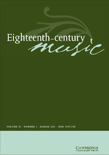
Eighteenth-Century Music
Fostering Dialogue on Historical Music PracticesEighteenth-Century Music, published by Cambridge University Press, serves as a pivotal platform for scholarly discussion surrounding music from the eighteenth century, ranging from musicology to cultural studies. With an ISSN of 1478-5706 and an E-ISSN of 1478-5714, this journal offers a unique lens into the musical landscape of the era, dissecting its myriad influences and contexts. Although it currently holds a Q4 ranking in the field of Music as per the 2023 category quartiles, its contributions are invaluable for researchers, professionals, and students eager to delve into historical music research. Operating from the United Kingdom, with an address at Edinburgh Bldg, Shaftesbury Rd, Cambridge, England, this journal invites submissions that engage with the long-standing traditions and transformative contexts of the period. By fostering an academic dialogue among its readership, Eighteenth-Century Music aims to illuminate the complexities and innovations within the realm of eighteenth-century music studies.